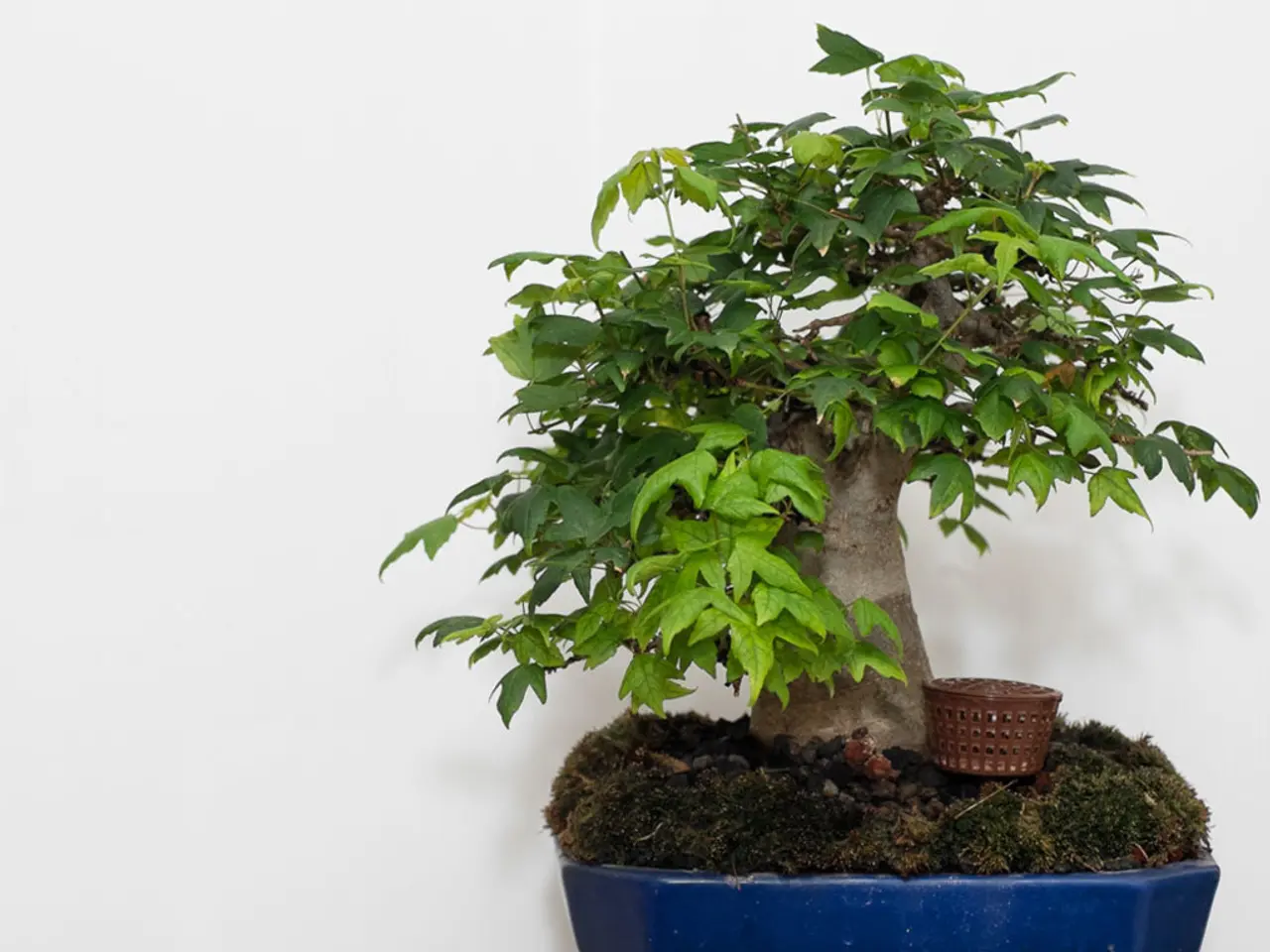Techniques for Stimulating Sleeping Bonsai Seeds' Growth Potential
Bonsai cultivation, the art of growing miniature trees in containers, begins with the germination of seeds. To ensure a successful start, it is crucial to provide the right conditions for the seeds.
Firstly, humidity levels should be maintained between 50% to 70% to prevent moisture stress. A good starting point for moisture level is similar to that of a damp sponge. The growing medium should be moist but not waterlogged.
Direct sowing can be a straightforward and effective approach for species with seeds that lack innate dormancy mechanisms. However, adequate light and suitable temperatures, species-dependent, should also be guaranteed when direct sowing. Rotating the seed tray every 2-3 days guarantees even germination.
Pre-soaking, a technique that involves submerging seeds in water for a specified period, can be beneficial for seeds with hard or impermeable coats. When executing pre-soaking techniques, use distilled water and maintain a consistent temperature between 65°F to 75°F (18°C to 24°C).
Temperature ranges vary among species, but most bonsai seeds germinate between 65°F to 75°F (18°C to 24°C). Bonsai seeds can be germinated indoors without a greenhouse by providing ideal conditions. A controlled environment with precise temperature, humidity, and light conditions is essential.
Common challenges include inadequate moisture levels, inconsistent temperatures, inadequate light exposure, contamination and fungal growth, and using old or low-quality seeds. Overcoming these challenges is essential for successful bonsai cultivation.
Seeds require a consistent supply of moisture to break dormancy and initiate germination. It is pivotal to monitor the moisture levels regularly, adjusting as necessary to guarantee the seeds receive the right amount of water.
Bonsai seeds take 1-3 months to germinate on average, although some species may require longer periods. During this time, the seeds do not require fertilization. A balanced, water-soluble fertilizer can be introduced after the first set of leaves emerges to promote healthy development.
Creating the ideal germination environment is crucial for successful bonsai seed germination. Regular potting soil can be too dense for bonsai seed germination, hindering growth. Instead, use a well-draining growing medium suitable for seeds.
While the history of pre-treatment techniques like stratification, scarification, and pre-soaking is not extensively documented, their use in bonsai cultivation is well-established. These techniques help to mimic the natural conditions seeds would experience in their native environment, promoting germination.
In conclusion, by providing the right conditions, bonsai seeds can be successfully germinated indoors. With patience and care, you can grow your own bonsai and enjoy the beauty of these miniature trees.
Read also:
- Peptide YY (PYY): Exploring its Role in Appetite Suppression, Intestinal Health, and Cognitive Links
- Toddler Health: Rotavirus Signs, Origins, and Potential Complications
- Digestive issues and heart discomfort: Root causes and associated health conditions
- House Infernos: Deadly Hazards Surpassing the Flames








